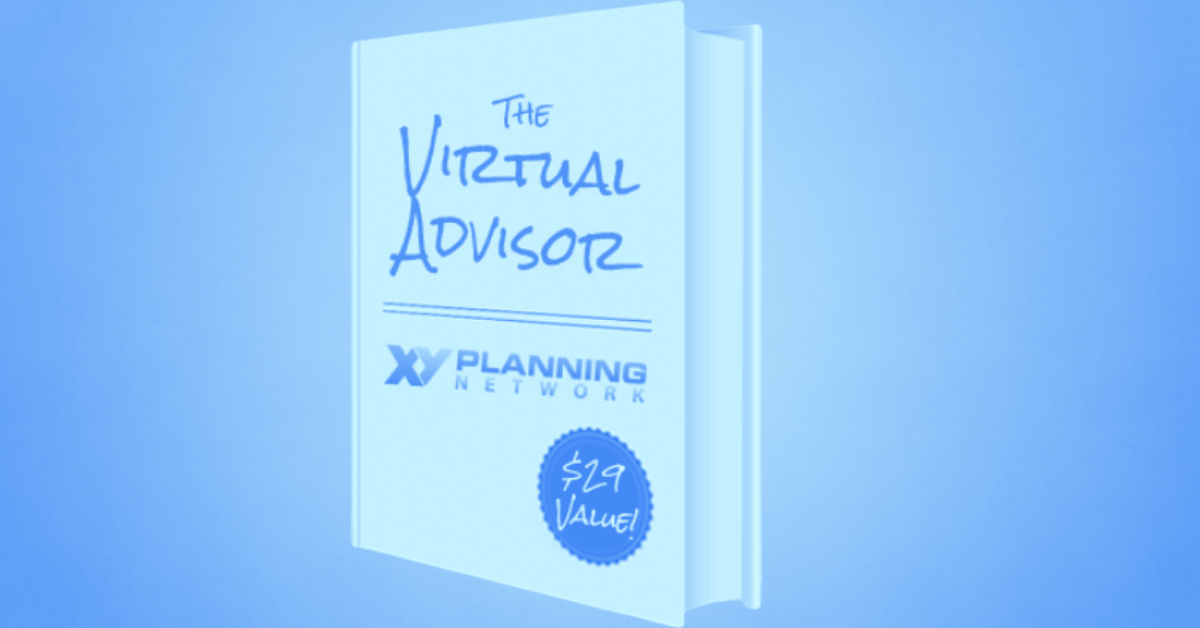Working From Home: How Advisors Can Transition to a Virtual Practice
Share this
Over the course of just a few months, our world has rapidly shifted. RIA owners and their employees have been forced to revisit how they work. For many, not only has the fundamental experience of going to work changed, but our client relationships have shifted as well.
Transitioning a brick-and-mortar business to a virtual one is not easy, but certain circumstances (like a global pandemic) make the transition a necessity, not a choice. If you set expectations and prepare your business for the shift, you can tap into the many possibilities afforded to virtual teams. And if you've considered making the shift to a virtual firm before, you may even find now to be the most opportune time to do so. As they say, there's no time like the present.
Like your clients, you too are being asked to ‘shelter in place’ or greatly limit your outside activity. At the very least, you’re likely not going into your office anymore and you’re not seeing clients face to face. This is a shared experience with your clients. Most of us are learning how to navigate the challenging of continuing on with life despite being confined to our homes. Expectations should be adjusted accordingly.
Remember, however, that moving to a virtual practice does not mean you’re becoming a traveling nomad, needing to identify a stable source for internet access while at a hostel in Asia or hiking to base camp at Anapurna—you’re literally just going to do your work from your home, not your office. We’re talking about a virtual practice, not a mobile one (which would be a much harder challenge).
Maintaining Client Relationships
The biggest shift to a virtual practice will be how the client relationship is facilitated. When you have clients visit you in your office, you both have expectations about how that meeting will be facilitated. Exactly how you’re executing that relationship now that you can’t meet in the office will inevitably change.
The most logical way to continue a relationship with a client is to make it a ‘virtual’ one that’s facilitated through phone conversations, emails, or virtual calls. Given that it’s 2020, you’re probably already familiar with the first two methods. The third, virtual calls, is something that may take some time to execute perfectly. (Jump down to the execution section for more details.)
For those of you who have never facilitated a virtual call from your home, you may be concerned about your clients getting a closer glimpse into your life that you’re not familiar or comfortable with. Remember, that goes both ways.
When you first get on a call with a client, you may have a mic issue, your video may not work, your dog may be barking...the list goes on. Remember, that goes both ways. Release your expectations. You will get the hang of it, and so will your clients. Most clients will be especially forgiving during this time, so don’t fault yourself for a rocky first-execution. Be kind to yourself and don’t be afraid to ask for compassion.
However, whether your relationship is in person or remote, the expectation your clients have of you and the relationship won’t change. You still need to provide value, help them with their financial success, and engage them in an ongoing relationship. Your work doesn’t stop, nor should it change much. You still need to create a financial plan, you still need to gather onboarding documents, and you still need to complete your compliance tasks. All of these things, if they haven’t already become electronic, can be by adopting a solid tech stack. This will take time, but if you haven’t already been using the document vaults included in financial planning software like eMoney and RightCapital, or HelloSign to execute client agreements, get ready for an efficiency overhaul.
Finding ourselves amidst a global crisis also means you need to change your own expectations for how you grow your business for the foreseeable future. If your business growth has been exclusively produced from in-person seminars or networking events, you’ll need to pivot and identify ways to host webinars or attend virtual networking events. This is an opportune time to lean into communities to tap the brain trust of a Network. If you're an XYPN member, bring your ideas to the member forums or tap into your study group.
This change is not a small one. The expectations you have for your current reality should include space for frustration and discomfort, balanced with expectations of growth and potential.
Execution
We can all but promise you that facilitating virtual meetings is not as difficult as you might think. If you’re not currently facilitating virtual relationships with your clients, the following are cold hard tips for the tech and materials you’ll need to manage them well:
Video conferencing software
Select a conferencing platform that serves you best. Most XYPN members use Zoom as it offers a wide range of features and works well on PC, Mac, IOS, and Android devices.
Don’t forget to review any security concerns related to the conferencing platform you choose. With the recent rise in virtual pranks like Zoombombing, it’s important to address any concerns your clients may have around the security of your meetings. Here are a few tips:
- Either set up your meetings to include password-only access or takes steps to ensure that the meeting links are not publicly shared.
- Lock the meeting after all attendees are present, preventing uninvited guests from joining.
- If you are choosing to use the virtual meeting room after completing the client conversation, physically remove the client from the space.
Keep in mind that video conferencing can lose some of the nuances of in-person meetings. Narrate your actions if you’re looking away to take notes, review a plan, etc. Quiet statements of agreement and subtle gestures like nodding can be lost over the video so don’t be afraid to overemphasize them.
Scheduling Software
Almost as important as the video conferencing software you choose will be your scheduling software. Many use Calendly, though other options like ScheduleOnce are also available. Make sure you fully understand the tools you choose to implement by taking the time to review and test them out. Having a peer or family member try a mock-scheduling with you is a great way to work out any kinks and ensure that prospects and clients will have a seamless experience.
Headset & Audio Equipment
Because the conversations will not be happening across a table, it is imperative to pick a high-quality pair of headphones with a microphone. While most computers come equipped with a decent built-in mic, they can pick up unwanted background noise that may be distracting during important conversations. Similarly, corded headphones with lapel-type mics are also not recommended as they can create unpleasant feedback from typing, clicking, etc.
Set the stage!
If available, it’s best to have conversations with clients and prospects in a private space such as a second bedroom or home office. Whenever possible, ensure your background is uncluttered and any unrelated resources are out of the way. And check your lighting—you don't want to look like you're in the witness protection program when you jump on with a client, or be super washed out with light.
Holding Space for Yourself & Others
Now that you have a work oasis arranged, the next steps are some of the most crucial. Many of us have had the opportunity to engage in a virtual event of some sort prior to our new reality but that does not mean that all prospects and clients will be game to share their financial baggage with you over a computer screen. The following are some tips to make them (and yourself) feel more comfortable in this new space.
Test, test, and test again!
Like many tools, video conferencing is something that is best learned through practice. Ask a friend or family member to help you run through a meeting. This will give you a chance to try out any settings or features that may enhance or detract from the meeting experience. When you’re ready, choose your easiest and/or most forgiving client to test on.
Turn off video & mic for all participants as they join
Most video conferencing software now has the ability to adjust the experience of clients entering a call. It’s recommended that you mute both the microphone and video for attendees upon entering to help minimize embarrassing sounds/sights as you all enter. It will also help both parties settle into the space before you begin the meeting, and give you a chance to ask your clients if they are actually comfortable being on video before turning their camera on.
Minimize distractions
It could be as simple as a sticky note on the doorbell to dissuade an intrepid parcel deliverer from rousing your dog or locking the door to prevent unplanned characters from entering stage left, but it’s important to create an environment that minimizes distractions for both you and the client. While most clients would give you grace for such things as we’re all living a shared reality right now, it’s your responsibility to maintain the boundaries that will ensure they feel safe and heard.
Be Organized
We already mentioned keeping a clear desk, but how about a clear mind? Organize mentally prior to the call by taking a few moments to ground yourself in whatever way feels best, whether that be a 10-minute meditation, a brisk walk, or a light snack.
Be Honest and Open
It's easy to assume that clients are already up to speed and prepared to make the jump to virtual, but making that assumption could harm the trust you’ve worked so hard to build. Instead, take a few minutes on your first meeting to speak candidly about the change you’re both making and why it’s happening. This will give them an opportunity to ask questions or voice any concerns they might have.
Allow your clients the space and time to speak their minds, especially in a virtual environment. They may need longer to think over responses to questions or take a bit more time than normal to compose questions. (Don’t forget to account for the natural lag in audio/video present when using the internet too.)
Opportunity: Planning for the Future
You may find this process of transitioning to a virtual firm to be an incredibly exhilarating experience. It may even remind you to review the real ‘why’ behind the work you do. We encourage you to think about both the type of people you’re serving and the services you’re providing while asking if your work is still fulfilling the purpose about which you're most passionate.
Remain open to the endless possibilities and opportunities that exist from our shared global experience. Embrace that life will not always look the way we thought it would, that our clients won’t always do what we want them to do, and how and why we serve might be just a little different than what we thought it would be.
For more about transitioning quickly to a virtual firm, be sure to check out our free on-demand event, How to Pivot to a Virtual Practice Today.
About the Authors

Maddy Roche is the Director of Member Services at XYPN, and has been making moves and getting sh!t done since she joined the team in May of 2014 when the Network was made up of our first 30 founding members. Since then, Maddy has worked with and welcomed each of the Network’s members, and helps all of them take advantage of XYPN membership. She manages the XYPN Member Experience Program.

As part of XYPN’s Member Services team, Kassy helps to personalize advisors’ relationships with XYPN membership and helps to ensure a high quality experience in her role as a Member Experience Specialist (MES). She is passionate about thoughtfully constructed processes and thrives when helping others problem-solve. Connecting people to each other is a great source of joy for her and she does so whenever the opportunity arises.
Share this
- Running Your RIA Efficiently: Outsourcing Bookkeeping with XYPN Books
- Road to Launch with XYPN Member Alan Skillern, CFP®, MBA
- Coaching for Better Time Management: Prioritizing Organic Growth in Your Daily Routine
- Boost Your Financial Advisory Practice: SEO Strategies and CRM Optimization for Sales Success
- Advisor Blog (693)
- Financial Advisors (221)
- Growing an RIA (99)
- Digital Marketing (87)
- Marketing (84)
- Community (81)
- Start an RIA (76)
- Business Development (72)
- Coaching (72)
- Running an RIA (70)
- Compliance (69)
- Client Acquisition (65)
- Technology (64)
- XYPN LIVE (59)
- Entrepreneurship (57)
- Sales (49)
- Practice Management (44)
- Client Engagement (41)
- Bookkeeping (38)
- XYPN Books (38)
- Investment Management (37)
- Fee-only advisor (36)
- Lifestyle, Family, & Personal Finance (31)
- Employee Engagement (30)
- Client Services (25)
- Financial Education & Resources (25)
- Journey Makers (21)
- Market Trends (21)
- Process (14)
- Niche (11)
- SEO (9)
- Scaling an RIA (9)
- Career Change (8)
- Transitioning Your Business (7)
- Partnership (6)
- Transitioning To Fee-Only (4)
- Social Media (3)
- Transitioning Clients (3)
- Emerald (2)
- Persona (2)
- RIA (2)
- Onboarding (1)
- Sapphire (1)
Subscribe by email
You May Also Like
These Related Stories

How to Create a Business That Supports Your Great Life
Jul 8, 2015
5 min read

Grow Your Business by Working with a Virtual Team
Mar 18, 2015
10 min read



